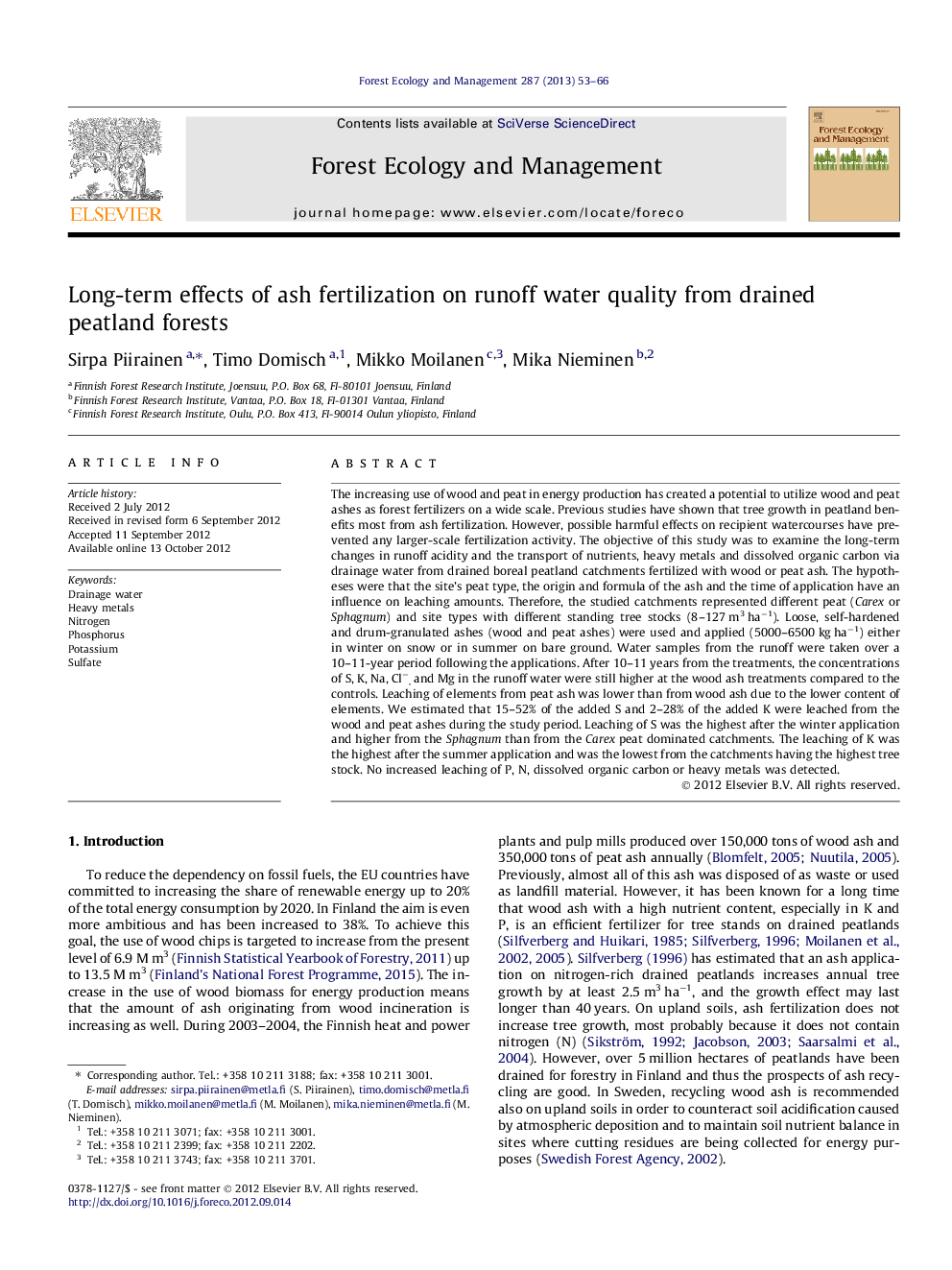| کد مقاله | کد نشریه | سال انتشار | مقاله انگلیسی | نسخه تمام متن |
|---|---|---|---|---|
| 87294 | 159243 | 2013 | 14 صفحه PDF | دانلود رایگان |

The increasing use of wood and peat in energy production has created a potential to utilize wood and peat ashes as forest fertilizers on a wide scale. Previous studies have shown that tree growth in peatland benefits most from ash fertilization. However, possible harmful effects on recipient watercourses have prevented any larger-scale fertilization activity. The objective of this study was to examine the long-term changes in runoff acidity and the transport of nutrients, heavy metals and dissolved organic carbon via drainage water from drained boreal peatland catchments fertilized with wood or peat ash. The hypotheses were that the site’s peat type, the origin and formula of the ash and the time of application have an influence on leaching amounts. Therefore, the studied catchments represented different peat (Carex or Sphagnum) and site types with different standing tree stocks (8–127 m3 ha−1). Loose, self-hardened and drum-granulated ashes (wood and peat ashes) were used and applied (5000–6500 kg ha−1) either in winter on snow or in summer on bare ground. Water samples from the runoff were taken over a 10–11-year period following the applications. After 10–11 years from the treatments, the concentrations of S, K, Na, Cl−, and Mg in the runoff water were still higher at the wood ash treatments compared to the controls. Leaching of elements from peat ash was lower than from wood ash due to the lower content of elements. We estimated that 15–52% of the added S and 2–28% of the added K were leached from the wood and peat ashes during the study period. Leaching of S was the highest after the winter application and higher from the Sphagnum than from the Carex peat dominated catchments. The leaching of K was the highest after the summer application and was the lowest from the catchments having the highest tree stock. No increased leaching of P, N, dissolved organic carbon or heavy metals was detected.
► We measured long-term element leaching from wood and peat ash fertilized forest peatlands.
► Sulfur, potassium, chloride and sodium were the most leachable elements.
► The loads of phosphorus and nitrogen to watercourses remained negligible.
► No leaching of heavy metals occurred during the 10–11 years study period.
► Site characteristics were the main factor influencing leaching amounts.
Journal: Forest Ecology and Management - Volume 287, 1 January 2013, Pages 53–66